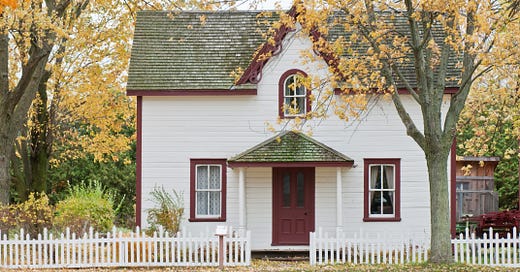
The first property I purchased was a quaint little townhome in Oklahoma City back in 2007. It was a two-bedroom, 2 1/2-bathroom unit I bought before getting married.
But I was forced to sell as part of my divorce settlement. My preference was to keep the property and turn it into a rental. It would have never worked. The location was subprime, my divorce was too contentious and the monthly homeowner’s association fee would have wiped out profits.
I paid $59,000 for the unit. It sold for $64,000 in 2018. We split the paltry profits, all of which probably indirectly went to attorneys’ fees. Today, the same townhome is valued at $106,900.
The experience taught me a lot about real estate. I’m ready to learn more.
After renting for the past six years, it’s time I jump back into homeownership. It’s imperative on my wealth-building journey, a critical vehicle to getting us where I believe we’re going. And so on Saturday morning, I took the first step toward becoming a homeowner again.
But this time, I’m not just looking to own a single-family home. I intend to rent an owner-occupied, multifamily unit. It’s commonly called house hacking, and I see it as a much smarter way to own.
It’s a concept I wasn’t taught nor one I saw modeled growing up in Texas and Oklahoma, sprawling states with plenty of land for families to enjoy their own lots. My previous vision for a home mirrored the stereotypical kind that features a white picket fence.
Acquiring that type of home soon became my chief goal after divorce set me back. I started saving what I could for a down payment. My deposits weren’t much or consistent, yet I had the nerve to set a $50,000 target. If I got there, I figured I could comfortably purchase and live in a $250,000 home.
At the rate I was going, however, it would have taken me a decade or more to build up enough for my desired down payment. I needed to do more than save. I needed to invest. And I needed more than one stream of income from being a working stiff for one company. I needed to launch my own business.
As those realizations were becoming clear, a phone call with my cousin Shelby, a loyal reader of Money Talks, gave me a new perspective. We spoke on May 22. Shelby schooled me to a savvy real estate investor he had listened to on the Millionaire Mindsets podcast that morning. The guest was Andre Haynes.
I told you last month that I met Haynes at Stock Market in the Streets. He’s the reason I’m no longer searching for that white picket fence.
Haynes has traveled the country trumpeting the Neighborhood Assistance Corporation of America, also known as NACA. It’s a non-profit organization that fights for economic justice through home ownership and community action. NACA claims to have coined the term predatory lending. Its mission is to stabilize neighborhoods.
To that end, NACA boasts of offering “America’s best mortgage.” When you hear the perks, they sound too good to be true — No down payment. No closing costs. No mortgage insurance. No consideration of credit score. Below market interest rates.
If you’re like me, you’re not just wondering what’s the catch, you're waiting for it to jump out and snatch you.
Well, that brings me back to this past Saturday morning. Going the NACA route is a tedious process, and there are some restrictions. To receive such a sweetheart setup, though, the program rightfully requires a lot from you. The first step is a mandatory, four-hour qualification workshop.
I didn’t mind. Critics of NACA cite the potentially arduous process. But for what the program offers, I’m dedicated to doing whatever is required. On Saturday, I gladly got up, whipped up some biscuits, eggs and grits, and made my way to a church on the west side of Chicago.
About 150 other beautiful, black and brown faces filled the room. We were all there looking to take the same pivotal step toward changing our family legacy. It was inspiring — until the instructor informed us that the survivors among us would soon be competing for the same scarce real estate.
Essentially, the workshop was an informal walkthrough of what NACA is and is not and how eligible homebuyers can expect to navigate the program. Because of technical difficulties with a video presentation on the organization’s history, and perhaps thanks to having a hungry instructor who admittedly skipped breakfast, my workshop took only 2 1/2 hours.
I left more knowledgeable about NACA and more confident that my next property is just around the corner. I’m not running from inflated interest rates. I aim to be at the closing table by the end of spring.
I’ve already reduced my spending by cutting back on everything from eating out to subscription services. Eliminating my biggest expense, which, like most Americans, is housing, is my next goal.
I have a lot to learn on this leg of our journey. The thought alone of becoming a landlord is daunting. But I love the potential upside. Living for free as others pay our mortgage is not just a pipe dream, it’s possible. And that’s my plan.
I’m tired of paying rent to someone on the first of every month. It’s time I get on the other side of that equation. It’s time we start playing real-life Monopoly.
It’s time for me to jump back into real estate.




